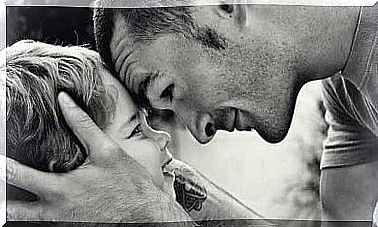Weight Loss Process: Behavioral Activation

Behavioral activation is best known as a tool to treat certain mood disorders such as depression. This type of strategy aimed at increasing the repertoire of behaviors has various advantages. It is, for example, useful in psycho-nutrition: behavioral activation can, in fact, be a valuable tool for losing weight.
The psychologist and nutritionist can play an important role in helping a person improve their BMI (body mass index). While it is true that the acquisition of new habits requires constant effort, behavioral activation can serve as a support tool.
Behavioral activation
Behavioral activation studies the functions of an individual’s behavior in the present moment based on their context and experience. It helps the individual to incorporate new ways of proceeding into their behavioral repertoire in order to initiate healthy habits that shape a new way of life, such as a weight loss process.
The basic structure of a behavioral activation program is activation. We consider that certain behaviors may not be motivating. Performing these behaviors is nevertheless necessary to achieve long-term results.
In other words, behavioral activation is the achievement of certain behaviors that bring the person closer to the habits they need to achieve their goal requires sufficient motivation. This motivation can come later, however, once she realizes the behavior.
In short, behavioral activation causes us to work from “the outside in” (motivation comes once the activity has been done). And this through the performance of certain activities that increase the probability of establishing certain behaviors in the individual who wishes to adopt a change.

How to implement a behavioral activation program in the weight loss process?
Carrying out self-registrations is of vital importance in knowing the lifestyle of individuals. It is also essential to collect other key data to initiate behavioral activation.
The presence of a nutritionist or a nutrition technician is of particular importance. Indeed, it is appropriate that it is the professional responsible for knowledge in nutrition who initiates the process of healthy habits and maintenance of a healthy weight.
The assessment of the person’s capacities for change is also of particular interest in shaping the first steps towards behaviors that bring them closer to their goals. Once we know the skills and abilities of the individual, it will be possible to take action.
They set small steps for this to bring him closer to his goals. The idea is to introduce changes slowly , but steadily. This helps to avoid boredom and lack of resources, thus promoting stagnation of activation.
The Benefits of Behavioral Activation in Weight Loss Processes
We have previously listed the habits to turn into smaller challenges. The person thus has the possibility of obtaining the reinforcement which arises from the accomplishment of the sub-goals or intermediate steps, while increasing the probability of fixing the habit. Some of the benefits of behavioral activation include:
- It provides the person with a sense of competence when it comes to performing certain tasks which may be difficult at first.
- E s the increases motivation of the person once it achieves the objective.
- It teaches other more complex skills or highlights skills that the person was not aware of at the start.
- It works thoughts and emotions as motivating or inhibiting elements of objective behavior, the main objective being the performance of the behavior.
What activities can increase or teach in a weight loss program?
A person who decides to follow a program to lose weight or maintain a healthy weight often sets unrealistic goals. For example, if a person usually does not exercise, running 20 kilometers to start will only contract their body, which will be an obstacle to starting over.
Moreover, to set goals ir Réali sts can generate a feeling of malaise and frustration. The person will think that he is not capable, when the problem lies in the plan established.

Desired behaviors and realistic goals
Behavioral activation helps build healthy habits. The person then observes in themselves small changes in their routine without their goals exceeding their capabilities. Here are a few examples that illustrate this:
- Going to the gym embarrasses a person because they don’t know what exercise routine to do. She estimates that the exercises she knows will only last 20 minutes, which she feels is insufficient to reach her goal.
- With behavioral activation, she can start exercising for those twenty minutes, and gradually add new exercises. Activation will fuel personal motivation.
- A person decides to change his eating habits, but he does not have enough cooking skills.
- Behavioral activation would start her with organizing the shopping cart, avoiding a certain percentage of ultra-processed products.
- A person wants to exercise in the open air, but is afraid that others will laugh at him for being clumsy.
- In this case, the behavioral activation would start her with short walks.
If, in these examples, the person directly achieves the desired behavior (going to the gym for an hour, not eating ultra-processed foods and cooking, going for a run), without intermediate behaviors and activation, it is highly likely that they only do it once.
In short, behavioral activation makes it possible to carry out certain activities that we did not do before. It also establishes the desired behaviors over the long term.










